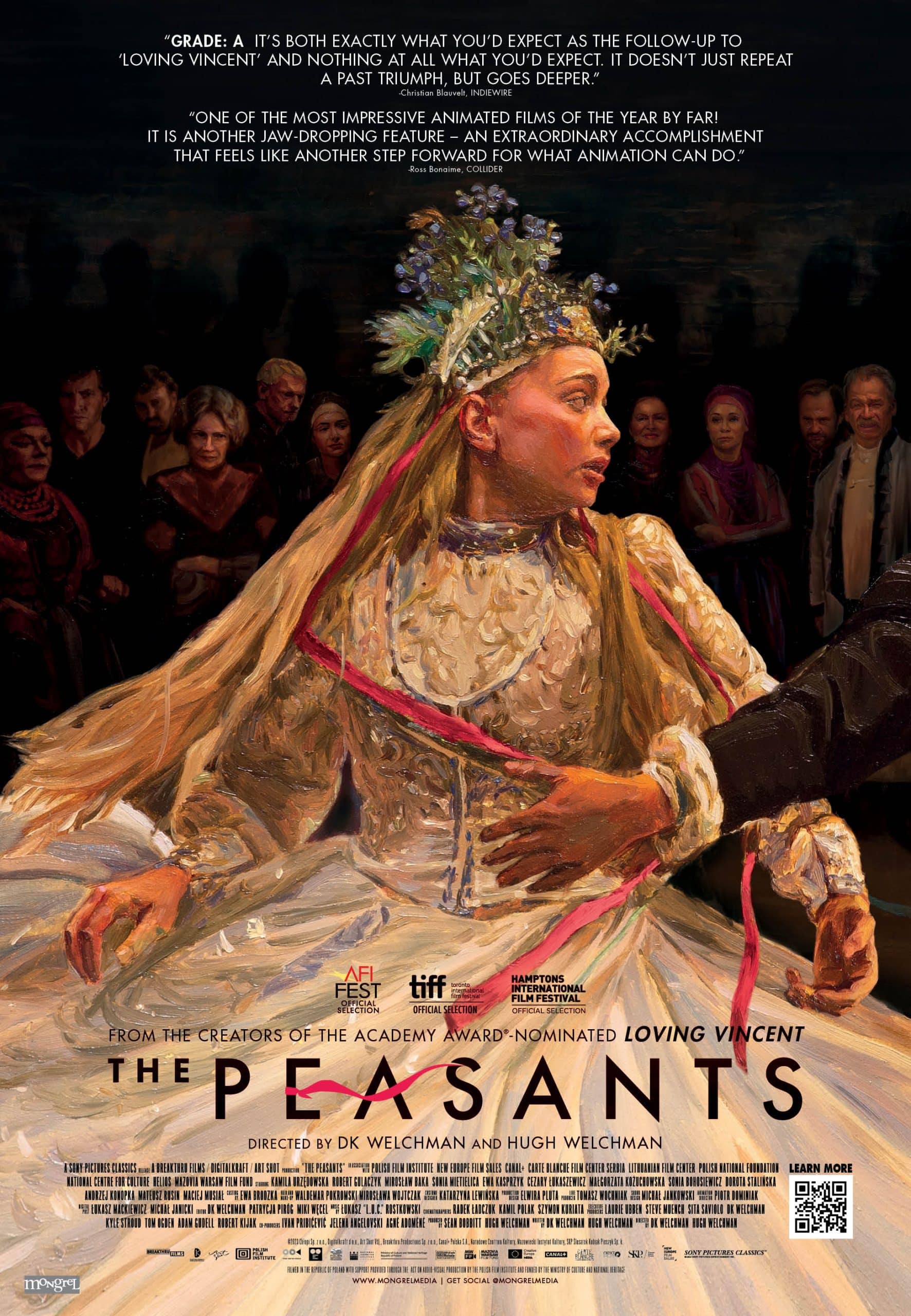
- Starring
- Kamila Urzedowska, Robert Gulaczyk, Miroslaw Baka
- Writers
- DK Welchman, Hugh Welchman
- Directors
- DK Welchman, Hugh Welchman
- Rating
- R (United States)
- Running Time
- 114 minutes
- Release Date (US)
- January 26th, 2024
- Release Date (CAN)
- February 16th, 2024
Overall Score
Rating Summary
Six years isn’t an egregiously long wait between films in the grand scheme of things, but any director(s) making a film as singularly stunning as Loving Vincent would understandably have audiences foaming at the mouth for more. At the same time, a film that stunning clearly requires more than its fair share of time to be developed, and those same fans thirsting for more could only hope that any follow-ups would employ the same delicate care that came before, no matter how long it takes. And so it is that directing couple DK and Hugh Welchman have finally unveiled their latest hand-painted odyssey in The Peasants, a film that, like its predecessor, completely awes with its beauty before audiences can even process its narrative shortcomings.
In Lipce, a late-19th century Polish village run by—you guessed it—peasants, Jagna (Urzedowska) is the literal draw of the town; every man wants to throw his hat (or more accurately, dowry) in the ring to win her affections, much to the discontent of the gossiping elders and other women who make up this heavily religious community. Jagna, though, has her eyes on Antek (Gulaczyk), a married farmhand and son of the head farmer in the village, the coldly distant Maciej (Baka). When Maciej, a widower whose advanced age is almost betrayed by his body’s daily workouts in the field, decides to take Jagna as his new wife, the tumultuous lives of these peasants begin to converge in a swell of dead romance, religious friction and land disputes. Riveting stuff, right?
On paper, The Peasants isn’t an entirely novel take on the religiously influenced period piece romance—one can imagine Władysław Reymont’s novel, published closer to the time in which it’s set, probably felt more refreshing at the time—and the Welchmans’ script certainly struggles to develop the superstitions these villagers have in unison with what they see as Jagna’s immorality. But in a Lipce marriage proposal, acres of land are just as crucial a bargaining chip as the bride herself, and the way these different priorities intersect and make enemies out of allies, and vice versa, is where the film finds its most compelling strength.
Well, actually, that’s a complete lie; the film’s greatest strength, as many could probably guess, is the absolutely incredible hand-painted animation used to bring The Peasants to life. Courtesy of 100 oil painters, the textured visuals that were previously used to mirror the works of Van Gogh are here used to evoke the art style of the sort of luxurious religious paintings one would find in this era—the same sort of luxury this village’s residents would praise in one breath and denounce as heresy in the next. What the Welchmans accomplish here is nothing short of breathtaking, emphasizing the story’s seasonal chapter separation by making each of those seasons’ natural surroundings pop with every tireless brushstroke. So gorgeous is the animation, in fact, that the surprisingly wonky editing that sometimes cuts between these works of art becomes all the more glaring over time.
As with Loving Vincent, there is undeniably a greater focus on how the story of The Peasants is delivered than what exactly that story is delivering in the first place. By the end, one will probably get the impression that they’ve seen this exact character arc on more than one occasion before, and it’s undeniable that, if the film were in live-action or even traditionally animated, the question of its greater contributions would come into question. But in reality, The Peasants does exist in its current dazzling form. Therefore, examining the film for what it is, audiences can at least be swept away in the painterly beauty that DK and Hugh Welchman, and their tireless painters, helped to bring from the canvas to the screen.
still courtesy of Sony Pictures Classics
If you liked this, please read our other reviews here and don’t forget to follow us on Twitter or Instagram or like us on Facebook.
Discover more from
Subscribe to get the latest posts sent to your email.
